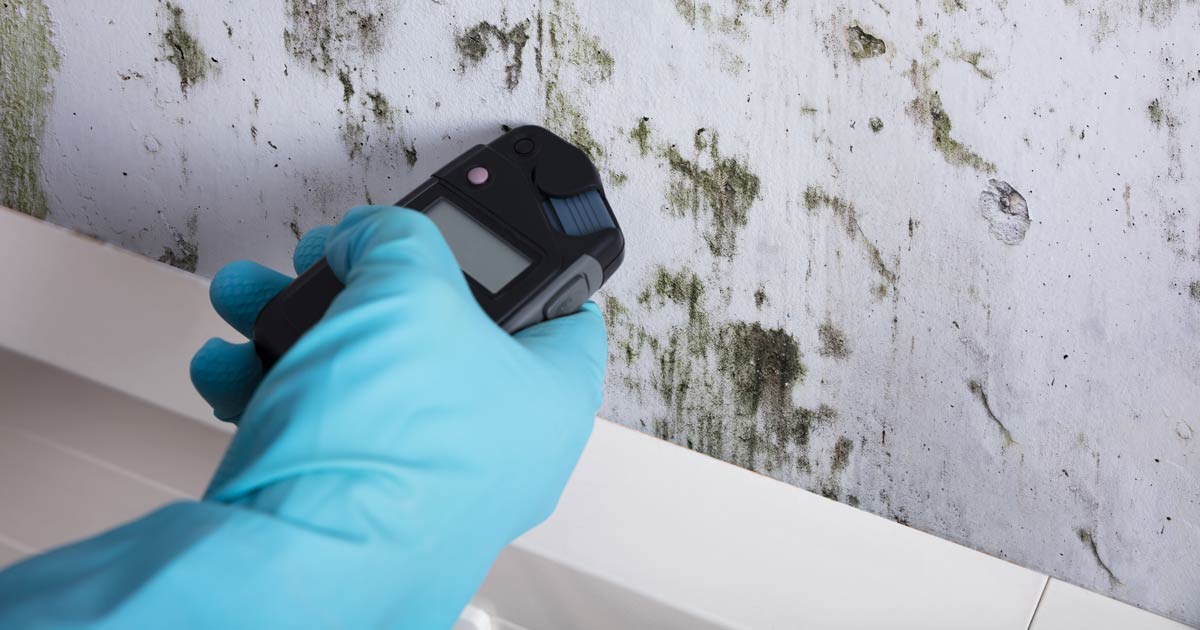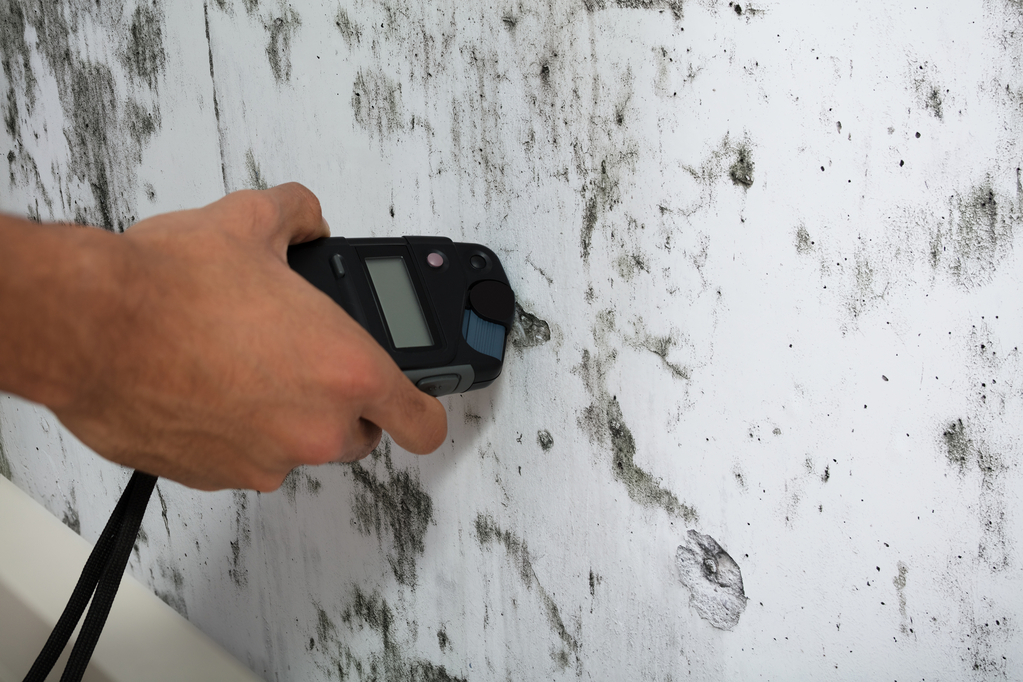Trick Tips for Successful Blog Post Mold Remediation
Addressing mold concerns in a effective and prompt manner is crucial for maintaining a healthy interior setting. Successfully completing mold and mildew remediation is a diverse process that calls for attention to detail and adherence to particular procedures. From inspecting treated areas to implementing wetness control procedures, each action plays a crucial role in guaranteeing the effectiveness of the removal procedure. There are crucial post-remediation actions that are similarly crucial however typically neglected. These steps not only confirm the success of the removal efforts but also contribute to protecting against future mold and mildew growth.
Examination of Treated Areas
Upon completion of the mold remediation procedure, an extensive assessment of the dealt with areas is imperative to make certain the efficiency of the removal efforts. This assessment serves as a critical step in the post-remediation phase to confirm that the mold and mildew removal and cleanup treatments achieved success in getting rid of the mold and mildew invasion and bring back a safe indoor setting. The assessment must be performed by qualified specialists that have the know-how to analyze the remediated locations diligently.
These include aesthetic assessments to inspect for any indications of mold growth or water damages, wetness degrees to confirm that the location is completely dry and free of excess moisture that can promote mold re-growth, and air top quality screening to make sure that the interior air is secure to take a breath. In addition, the inspection may involve utilizing specialized tools such as dampness meters and thermal imaging electronic cameras to identify hidden mold or moisture pockets that could lead to future mold problems if left uncontrolled.

Wetness Control Actions
Efficient wetness control procedures are important for stopping mold and mildew development and keeping a healthy and balanced interior setting. Furthermore, using dehumidifiers in damp locations can aid decrease humidity degrees, making it harder for mold and mildew to prosper.
Frequently checking and keeping the structure's exterior can additionally protect against dampness invasion. Post Remediation Inspection near me. Guaranteeing that seamless gutters are clear, downspouts direct water away from the structure, and the roofing system remains in good problem can assist prevent water from permeating into the structure. Effectively sealing home windows and doors can likewise assist keep moisture out
In instances where water damage happens, prompt action is necessary. Any leakages or spills need to be cleaned and dried out within 24-48 hours to stop mold development. Using wetness meters can assist spot hidden sources of water and make certain comprehensive drying out. By applying these moisture control steps, the danger of mold and mildew reoccurring can be substantially minimized, creating a much healthier indoor setting.
Appropriate Ventilation Evaluation
An important element of guaranteeing a healthy interior atmosphere message mold removal is conducting an extensive assessment of the air flow system. testing air quality after mold remediation. Correct ventilation analysis plays an essential duty in stopping future mold development and preserving air high quality within the damaged space. Throughout this hyperlink the analysis, professionals assess the performance of the ventilation system, looking for any kind of blockages, leaks, or malfunctions that might impede correct air movement. It is important to make sure that the air flow system is effectively sized for the room it offers which it meets industry standards for air exchange prices.
Moreover, examining the ventilation system includes examining the circulation of air throughout the area to identify any kind of areas of poor blood circulation where dampness and pollutants might accumulate. Proper air flow not only aids in managing humidity levels yet likewise help in removing airborne mold and mildew spores and other toxins, thus improving total indoor air high quality. By resolving any ventilation problems upload mold and mildew removal, homeowner can produce a healthier and a lot more comfortable atmosphere for owners while decreasing the threat of mold re-infestation.
Cleaning and Sanitation Protocols
To guarantee comprehensive mold remediation, thorough adherence to particular cleaning and sanitation methods is imperative. Cleansing and disinfection protocols play an important function in the post-mold removal stage to stop the reappearance of mold development and ensure a healthy and balanced and safe environment. The initial step in this process is the elimination of any kind of noticeable mold and mildew development making use of appropriate cleaning agents and strategies. It is important to utilize EPA-approved fungicides and disinfectants to successfully get rid of mold and mildew spores and avoid their regrowth.
Additionally, applying precautionary steps such as using mold inhibitors and keeping appropriate ventilation can assist reduce the threat of future mold and mildew problems. By complying with rigorous cleaning and sanitation protocols, residential property proprietors can guarantee the successful obliteration of mold and create a healthy interior atmosphere for residents.
Monitoring and Upkeep Strategy
Implementing a normal tracking and maintenance strategy is crucial for making sure the long-lasting efficiency of mold removal initiatives. When mold remediation is finished, it is crucial to develop a surveillance timetable to assess the success of the removal process.
In addition, creating a maintenance plan is key to avoid future mold and mildew issues. This strategy may consist of actions such as dealing with pipes leakages, improving ventilation, and regulating indoor moisture degrees. Regular upkeep not just assists in preventing mold however additionally find more info adds to keeping a healthy and balanced interior environment. It is recommended to record all monitoring and upkeep tasks to track progression and guarantee uniformity in the maintenance of the remediated locations. By implementing a comprehensive surveillance and maintenance plan, the risk of mold and mildew re-emergence can be dramatically minimized, advertising a secure and tidy living or workplace.
Final Thought
Finally, effective message mold and mildew remediation involves thorough examination of treated locations, execution of wetness control actions, evaluation of proper ventilation, adherence to cleansing and disinfection procedures, and facility of a tracking and upkeep plan. These essential actions are vital to ensure that mold development is effectively gotten rid of and protected against from recurring in the future. By complying with these standards, homeowner can preserve a healthy and secure setting for residents.
Upon completion of the mold remediation process, a detailed examination of the dealt with locations is essential to guarantee the effectiveness of the remediation efforts. These include aesthetic evaluations to inspect for any signs of mold and mildew development or water damage, moisture degrees to verify that the area is free and completely dry of excess moisture that might advertise mold re-growth, and air quality screening to make certain that the interior air is safe to take a breath. Furthermore, the evaluation might include making use of specialized devices such as moisture meters and thermal imaging cameras to detect concealed mold or moisture pockets that might lead to future mold troubles if left unattended. By addressing any type of ventilation problems look at this web-site upload mold removal, building owners can develop a much healthier and much more comfy setting for occupants while minimizing the threat of mold re-infestation.

Comments on “Testing Air Quality After Mold Remediation”